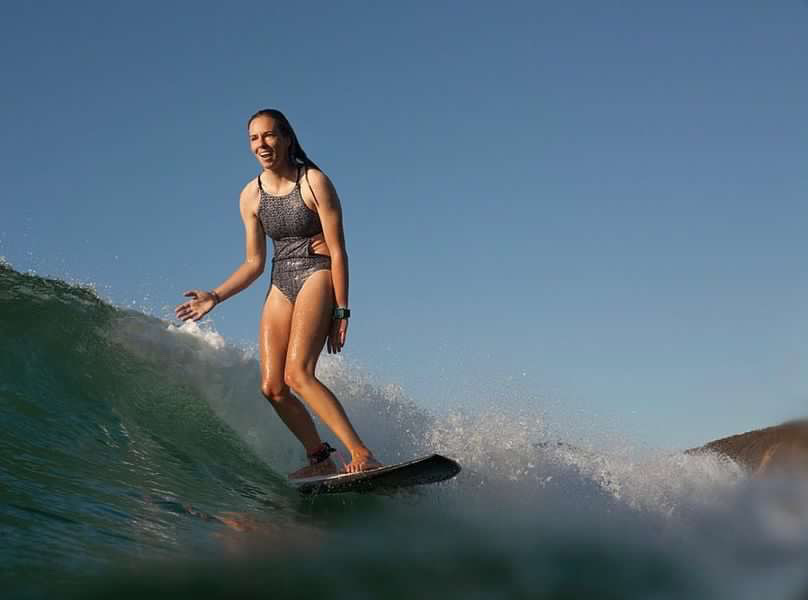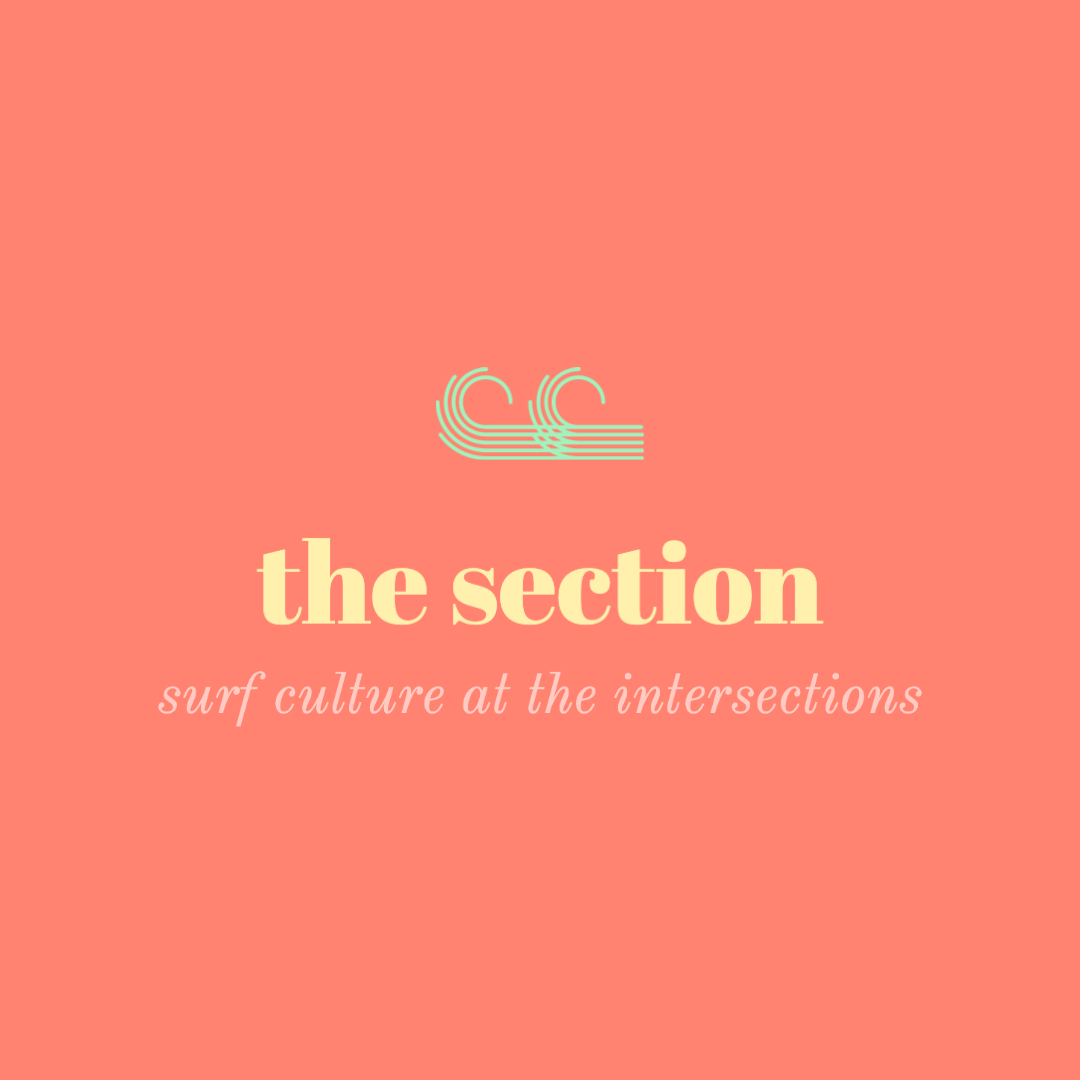Linley Hurrell is a surfer, activist, and teacher on Wadawurrung country. She works for Patagonia and the Saltwater Institute, and has done previous campaign work for Surfers for Climate. She is a mentor at Victorian Indigenous Surfing and an ambassador for Surfing Victoria’s Surf Her Way program.
I started planning The Section in 2020, and connected online with Linley at around the same time. I knew almost immediately I wanted Linley to be the first feature. Environmental activism is a huge part of Linley’s contribution to surf culture, but there are many layers to her advocacy, and the way she locates herself within the surf community resonates so well with the aims of The Section.
Our instagram chats started with me passing on a recipe for a Calabrese-style tomato salad (because she had a surplus of homegrown pomodoro beauties!), but quickly moved to other things: the environmental damage outdoor cats can do, our respective experiences with chronic-illness-induced exhaustion, outrage over Critical Race Theory being banned in schools, ADIDAS women’s skateboarding videos, anti-vaxxers being a thorn in our side, and any number of things we were frustrated about with the then Federal Government (hint: it was a large number).
Rippling under all of those chats was, of course, surfing.
Linley spoke with me recently about a heartwarming activist win, surfing with an invisible injury, and the importance of the southern right whale in maintaining Gunditjmara kinship and community resilience.
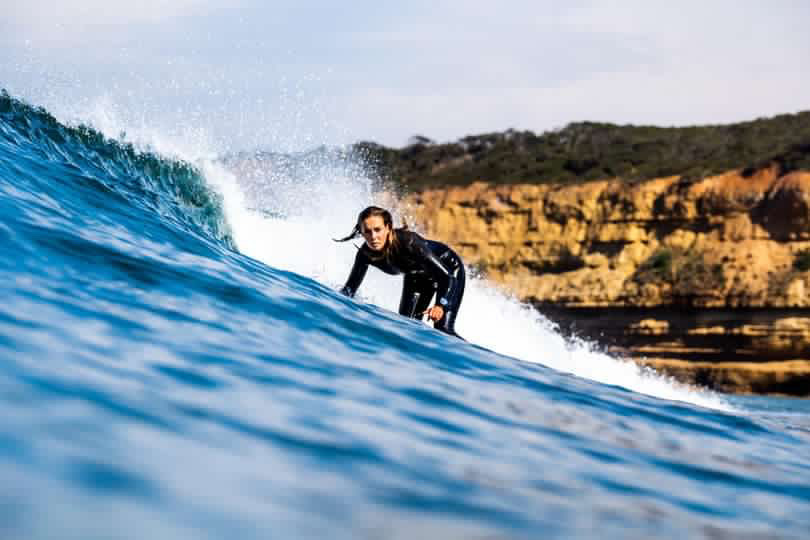
Linley, thank you for agreeing to chat with me for The Section.
You have been involved with some crucial activist movements, including the Parley for the Oceans Clean Ups on Cape York, Guggu Yimidhirr Country, and organising the first paddle out for Big Oil Don’t Surf.
How did you get involved in these campaigns?
No worries at all, thanks for having me! Great question – kind of by accident I guess, just through my work with Patagonia and some previous campaign work with Surfers for Climate. But coming to these roles with a background in education meant I could communicate the issues in a way that the everyday person could understand, so it made these campaigns much more relatable.
Some environmental activism campaigns tend to be so heavy on science that most people tune out, as they don’t understand.
If you can strip a campaign or issue back and then build upon the knowledge, most people will jump on, as it’s much easier for people to understand and then take into their own lives and circles.
What aspects of these campaigns are you most proud of?
Big Oil Don’t Surf for sure. It was so amazing to see the entire Australian coastal community jump on board with this, and everyone is really willing to learn and take a stand for the coastline.
For me, it was super special, especially when we found out Equinor had withdrawn plans to drill in the Bight.
I’d been surfing all morning and when I got out, I was greeted by all these crew I knew, congratulating me at the top of the stairs at my local surf break, telling me we’d won. It was so surreal and so amazing to have the community rally to both support the cause and celebrate its end, it’s something I’ll never forget.
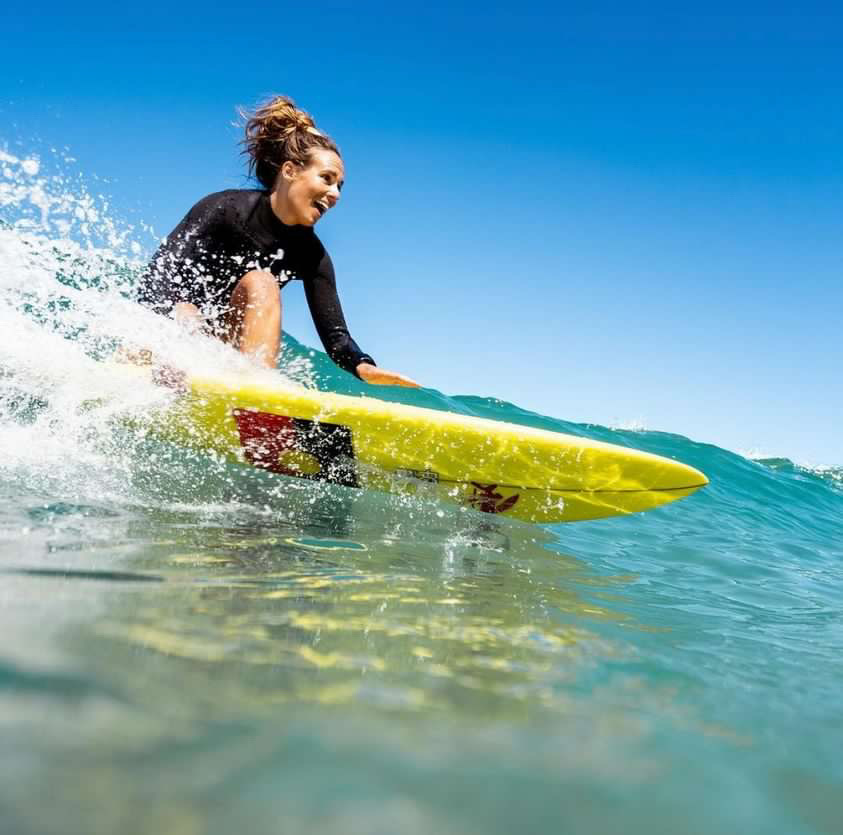
What is one thing from these environmental projects (either that you’ve learnt, seen, experienced) that has stuck with you, and that you would like to pass on for readers today?
A willingness to learn and unlearn.
I’ve found that a lot of people are really willing to listen and learn about things they may not have known about before or would have even been interested in, but soon realise that they are either connected to the issue or can do something to help the issue.
People are afraid of what they don’t understand, so it’s lovely to see people’s willingness to learn or unlearn to better understand or help make a difference.
More recently, you have been working with girls, women, and First Nations communities in surfing. Can you talk about some of these initiatives?
Yeah, so I mentor with the Victorian Indigenous Surf Program, which I love. We get kids connected to country and in the water. It’s about getting them active, building healthy relationships with physical activity, peers, mentors, and sea country.
Surf Her Way is an initiative to get more women into surfing. It’s in conjunction with Vic Health – so it’s an amazing program really aimed at women getting active, starting surfing, and taking up space in a line up.
Environmental activism is growing in surfing, which is excellent, but it’s great to see surfers expanding their advocacy.
What drove you to move across different forms of activism? Why do you feel this is important?
I think I’ve always been outspoken about things, I’ve always felt like an underdog, so I’m always up for a fight haha.
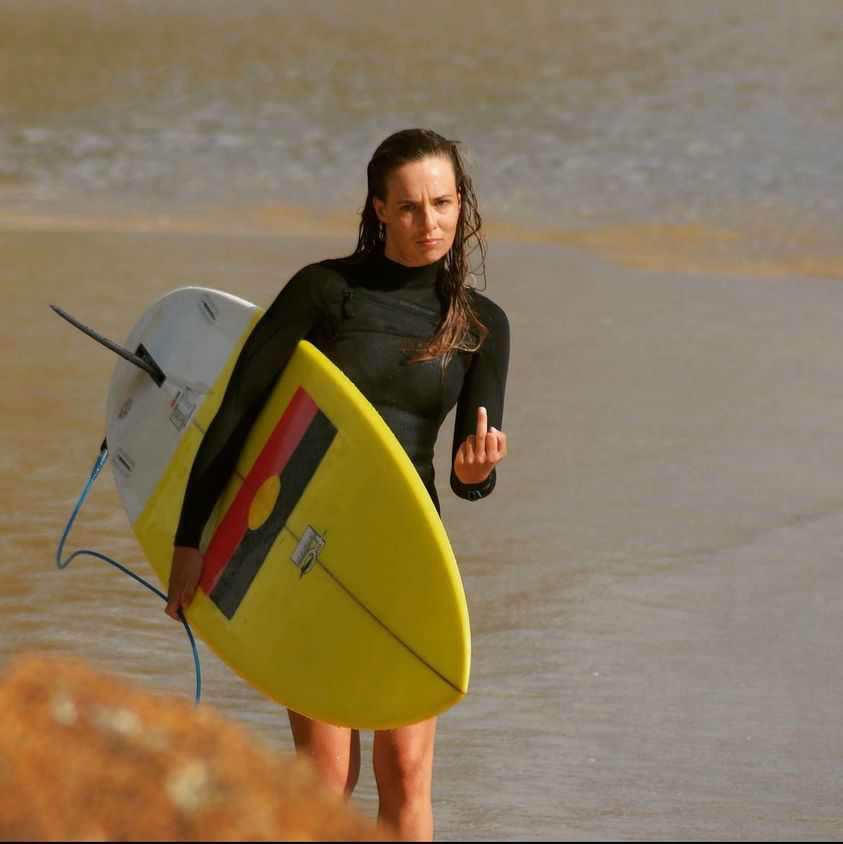
But in all seriousness, my advocacy has pretty much led me down the path of becoming a teacher after finishing high school. I just wanted to help people learn and do good in the world.
I think activism is super important, without grassroots movements nothing would change – it’s the whole notion of think globally, act locally, and I think people are really jumping on board with this now.
I remember a post you made following a Surf Her Way event in which you were frothing about surfing in a lineup with more women than men.
You talked about how outnumbered women usually are, and the lack of diversity amongst women surfers, in both media representations and your real life experiences growing up in the surf.
What does your local lineup look like today? Is it becoming more diverse?
Slowly, so slowly, but it’s certainly getting there!
What do you think still needs work in regards to access and diversity in Australian surf culture?
Hahah, oh, we have come a long way in a short space of time.
But it would be cool to see a more top down change, like, at a grassroots level surfing has changed, which is amazing, but a lot of the industry is still very much run by white men.
So I hope that’s the next to change.
In 2016, you suffered a traumatic brain injury (TBI) and severe post-concussion syndrome. How did that injury affect your surfing life in the short term?
Oh, wow, in the short term I was more or less bed ridden – for the best part of six-twelve months plus.
There were months there where I just didn’t even know if I’d be alive the next day, let alone imagining I’d ever surf again.
I had nothing at all at that stage. No career (I had to walk away from my teaching career), no identity (I felt like everything I knew about myself was gone), my health, or social life.
But I started getting better, and my medical team found that I really responded well to the physiotherapy component to my rehab – and that surfing would be one of the best things I could do for myself.
In the longer term, has having a chronic injury/illness/disability changed your relationship with surfing? If so, can you describe how?
It totally has. When I finally got the all clear to go back to surfing I was literally only capable of twenty minute surfs every few days until my capacity grew with time and now it’s the one thing I can do full time. I can surf for hours and not feel fatigue, but put me in front of a computer or a social setting and I’ll drop fast.
So it makes me really appreciate the ocean, and the healing it’s capable of, because without the ocean or surfing, I wouldn’t be here to give this interview today.
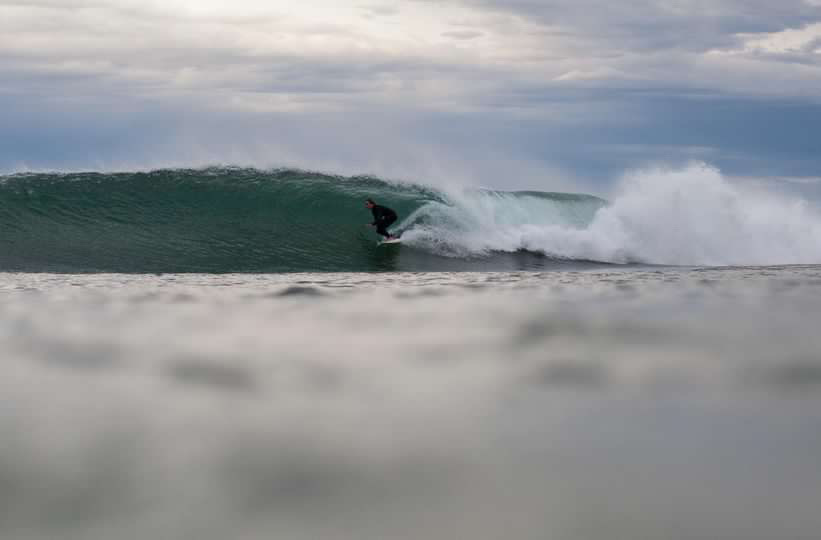
Knowledge about TBI has become more public thanks to social media. I know I have learnt a lot more about it from Owen Wright [former World Surf League competitive surfer] documenting aspects of his experience with the condition.
Is there anything about TBI that you wish more people knew, or that you’d like to share here?
Great question! There is absolutely more coming out about Brain Injuries now – especially through contact sport like AFL and such.
It’s a hard one, because they are incredibly hard to explain to people: how you are feeling on the inside when you look perfectly fine on the outside.
Sometimes I really wish I got a massive scar or something from my injury as it makes it more relatable and understandable for people.
I want to finish by drawing attention to the Southern Ocean Protection Embassy Collective (S.O.P.E.C.), a new group fighting the expansion of oil and gas testing in the home waters of Koontapool (southern right whale).
You wrote a beautiful piece for Patagonia recently about the project [you can read the article here] in which you stated: “Koontapool is kin”. Can you describe this kinship, and thus the importance of protecting these waters?
Thank you.
So, kinship is the interconnection we have to the world, whether that be to each other or particular plants or animals or country.
I’ve always been brought up with the story of the southern right whale (SWR) and how I’m connected to it. But the SWR is critically endangered, firstly from whaling through to modern threats of the expansion of offshore gas and oil drilling and seismic blasting, which is the practice of subsonic blasting to find gas and oil deposits beneath the sea floor.
I wrote particularly about the Gunditjmara connection to Koontapool (SRW), which is a deep and ancient matriarchal connection between mother and calf or mother and child. This connection is thousands of years old, and if this is broken that’s a huge loss of identity, culture and history.
Koontapool represents both strength, knowledge and resilience, we need to protect the whale not only for the whale and the Gunditjmara community, but for the wider community, too, who rely on the return of the whale each winter season.
What can surfers and allies do to meaningfully help the S.O.P.E.C. campaign?
Yeah, first and foremost sit and listen. Listen with respect and intent.
Support by showing up, or simply sharing stuff online, or signing the citizen’s declaration which asks for an immediate end to offshore gas and oil drilling and protection of sea country. [You can sign the citizen’s declaration by following this link]
Thank you for your time, Linley, and everything you do for surf communities and beyond. Any surf trips/adventures in the pipeline?
Couple of months in south Sumatra coming up for me, so busily trying to organise boards and bikinis now (this will be my first proper warm water surf trip), so it’s like the complete opposite of the usual packing of wetsuits et cetera.
Can’t wait!
